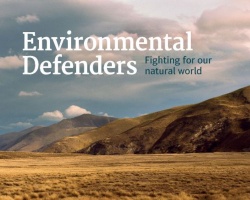Antarctica Looms For Otago Polytechnic
Cliff Lochhead has long had Antarctica on his bucket list. And, indeed, his forthcoming trip to the icy continent is likely to involve a form of bucket.
In an intrepid twist to his time studying a New Zealand Diploma in Engineering (Mechanical) at Otago Polytechnic | Te Pūkenga, Cliff will board a United States Air Force Boeing C-17 Globemaster in Christchurch on Friday, 24 February, travel 4000kms to McMurdo Station and on to nearby Scott Base, where he will live for nearly a month.
Summer at Scott Base equals lots of daylight (all day, in fact, during February) and relatively "warm" temperatures ranging between zero and, minus-10degC, near-perfect conditions for testing the equipment Cliff has helped develop as part of an University of Otago project, which Otago Polytechnic is supporting by providing engineering solutions.
The project, Tere Tīpako Tio: Rapid Extensive Antarctic Ice Sampling, aims to develop small, low-cost, easy-to-deploy drilling instruments, to collect ice samples rapidly and at a scale not previously possible. It is hoped the collected data will lead to a better understanding of ice sheets and how they might change in future.
Led by Geology Professor David Prior, from the University of Otago, the research team required an enthusiastic engineering student to help design and fabricate key elements of equipment.
Enter Cliff who, after being interviewed and accepted for the role, has used his mechanical engineering skills to build a range of high-pressure nozzles for a hot water drill as well as a help design, develop and test a system of buckets to extract water from the drill holes.
Cliff has been supported by Engineering Senior Lecturer Adam Liberatore, who helped scope and define the project.
"Essentially, we have made modifications to a commercial hot water blaster," Clifford explains. "The first problem we need to solve is whether we can even drill into the ice. If the system works as we hope, we’ll melt holes of differing diameters in the ice.
"Another problem is how to get the water out of the drill holes. If the holes are deeper than 50m, we’ll need to manually remove the water. So we’ve been working on a system that uses buckets - although these buckets are 3m long and 10cm wide, more like long tubes."
To lift the buckets, Cliff and company will employ a tripod, pulleys and cables - and their own muscles.
Still, as a former outdoor adventure instructor, Cliff is used to a few callouses.
"When I left school, I trained on the West Coast as an outdoor pursuits instructor. I was teaching rock climbing and a little bit of mountaineering. I’ve been in alpine areas, but going to Antarctica is something else.
"My father had been there years ago, helping build on Scott Base. I remember him talking about it. So I have always been interested in the idea of going there.
"And now I’m about to. I’m really excited."


 Environmental Defence Society: Groundhog Day, New Book Shows History Is Repeating Itself
Environmental Defence Society: Groundhog Day, New Book Shows History Is Repeating Itself NZEI Te Riu Roa: Mandated Single Approach To Reading Will Not Work
NZEI Te Riu Roa: Mandated Single Approach To Reading Will Not Work The Conversation: Could The School Phone Ban Work?
The Conversation: Could The School Phone Ban Work? Public Health Communication Centre: To Avoid A Measles Epidemic, Aotearoa Must Close The ‘Immunity Gap’
Public Health Communication Centre: To Avoid A Measles Epidemic, Aotearoa Must Close The ‘Immunity Gap’ Heritage New Zealand: Kid-friendly Archaeology Resource Kit Launched As Part Of Archaeology Week
Heritage New Zealand: Kid-friendly Archaeology Resource Kit Launched As Part Of Archaeology Week Tatai Aho Rau Core Education: Cyber Skills Programme For Tamariki Recognised At Māori Language Awards
Tatai Aho Rau Core Education: Cyber Skills Programme For Tamariki Recognised At Māori Language Awards